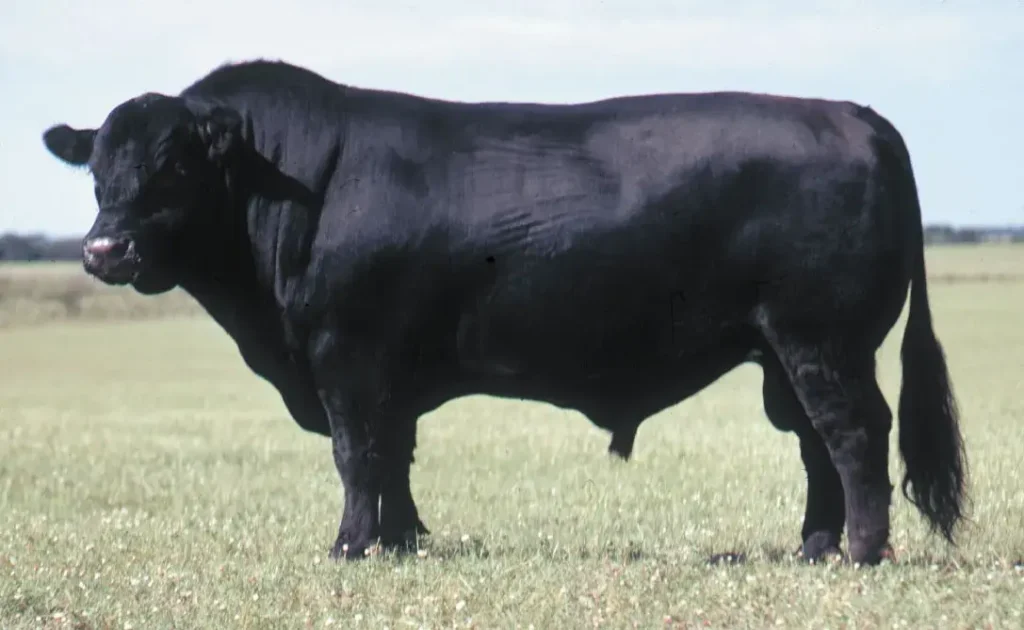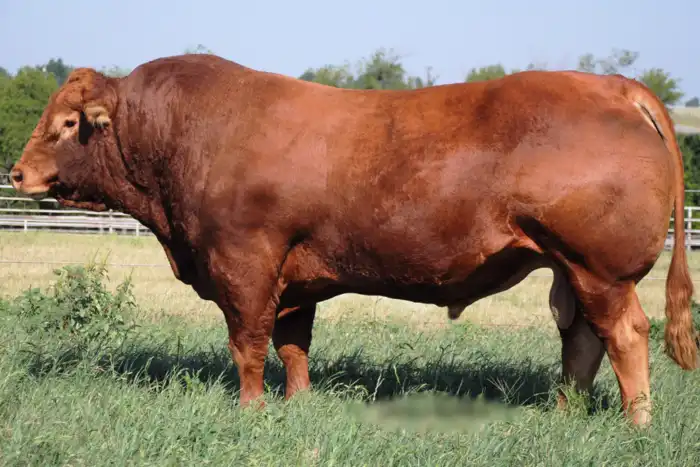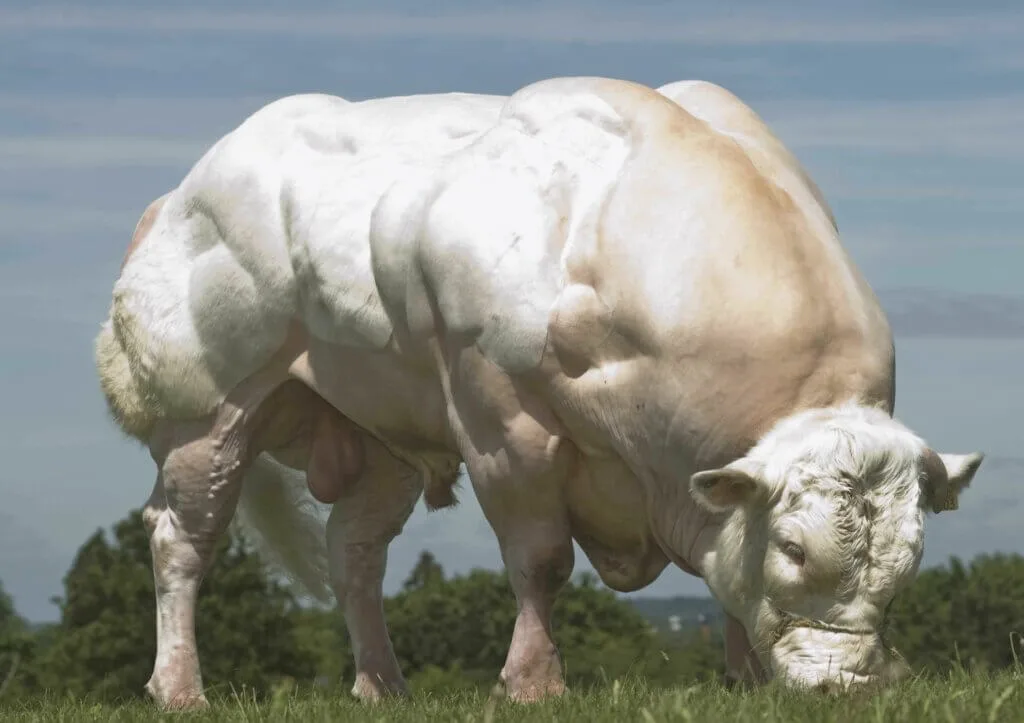If you’re looking for the Biggest Bulls in The World, then you are at the right place. In this article, we will discuss the Top 10 Biggest Bulls in The World.
Bulls are the most important domestic animals for humans. They have a gentle temperament and are known for their diligence. It has been helping the farmer’s uncle plow the fields and pull carts and has a close relationship with humans. They are known for their powerful stamina and big size.
There are many biggest bulls in the world. So, do you know what is the biggest bull in the world? Here in this article, we will know about the top 10 biggest bulls in the world.
Top 10 Biggest Bulls in The World
1. Chianina

Chianina cattle, origin and breeding process Chianina cattle are produced in the Chianina Valley in the central and western regions of Italy. They are an ancient draft breed in Italy. The registration of fine breeds began in 1932 and were later bred into the world’s best breeds.
Chianina bull is the biggest bull in the world. The weight of a 1-year-old bull is 480 kg and that of a cow is 360 kg; a 1.5-year-old bull is 690 kg and a cow is 470 kg; a 2-year-old bull is 850 kg and a cow is 550 kg. The maximum weight of an adult bull is 1780 kg, and the weight of an adult cow is 800~900 kg. This breed has long legs, a white body, a black nose, hooves, and a tail broom. Calves are born yellow to brown and turn white after about 60 days. Suitable for grazing, it is more resistant to sun grazing in summer.
The coat color is pure white and the tail hair is black. There are black spots on the skin except the abdomen. This breed is the world biggest bull breed in the world, with a tall body, long limbs, and good structure, but lacks chest depth. The height of an adult bull’s bun is 180 centimeters, with thick and solid bones and plump muscles. The average weight of cows is 500 to 700 kilograms, that of bulls is 800 to 1,300 kilograms, and the birth weight of calves is 40 to 50 kilograms
2. Sibi Bhagnari

The Sibi Bhagnari bull, commonly known as the Bhagnari breed, is a variety of cattle found exclusively in Balochistan’s Sibi area. These bulls are known for their strength, stamina, and adaptation to extreme environmental circumstances, making them ideal for the dry regions where they live. They are the 2nd biggest bulls in the world.
Sibi Bhagnari bulls are distinguished by their particular physical characteristics, which include a strong build and a muscular frame. Their coat color varies, commonly ranging from brown to black. These bulls are recognized for their prominent hump, a zebu cattle feature that helps them retain fat and thrive in harsh conditions. The weight of a Sibi Bhagnari bull is approximately 1700 kg.
Sibi Bhagnari bulls are an important part of the local traditional competitions and cultural activities, including bull racing and exhibits. The cultural significance of these animals in the local communities is reflected in their popularity as choices for such occasions because of their strength and agility.
Bulls from the Sibi Bhagnari tribe are prized for their cultural significance as well as their contributions to local agriculture and transportation. They are valuable assets for farmers and rural communities because of their capacity to work hard and thrive in challenging environments.
3. South Devon

South Devon cattle, also known as the “gentle giant”, originated in England and are the largest native bulls breed in the UK. They can reach an average weight of 1,600kg. South Devon bulls are known as a meat breed.
South Devon cattle have the appearance characteristics and large bodies. They are the biggest cattle breeds in England and Scotland. The body is slender, the limbs are short, and the muscles of the whole body are well-developed. Horned, hornless South Devon cattle have been bred since the 1970s.
4. Maine-Anjou

As the name suggests, this French cattle breed originated in the Man-Anjou region. It can reach a weight of about 1,400 kilograms, and it plays an important role for humans. The breed is known for the fact that it easily builds muscle and is easy to fatten.
Bulls in particular can be very strong, but cows have strong maternal instincts and calves are always thoroughly nourished thanks to the high-quality milk they provide.
5. German Angus

Another cattle breed that can be included among the biggest bulls in the world comes from Germany. The German Angus bulls weigh up to 1,200 kilograms and have a height of 1.5 meters. The breed was developed in the 1950s when German Angus bulls were crossed with different cattle breeds native to Germany.
The main purpose of selection is to obtain a large breed with a good constitution and no horns that can be used for beef production with low-fat content.
6. Belgian Blue

Belgian blue bulls, also known as Belgian devil tendon cattle, are native to Belgium and are the strongest bulls in the world. In the 19th century, it was crossbred with local cattle, British Shorthorn cattle, and French Charolais cattle in north-central Belgium.
Belgian Blue Bulls are tall and muscular. The coat is white, with blue or black spots on the body, and the size of the spots varies greatly. The head is light, the back is straight, the buttocks are slightly slanted, the body surface muscles are very eye-catching, the muscle bundles are well developed, and the shoulders, back, waist, and rear buttocks are heavily folded, showing the typical double muscle characteristics, and the body is long and tubular.
Belgian blue bulls mature early and grow quickly in the early stages. The average weight of adult bulls is 1,200 kg. The myostatin gene mutation not only makes Belgian Blue cattle abnormally developed muscles but also affects fat deposition, making Belgian Blue cattle 30% lower in fat and cholesterol than other cattle breeds.
7. Hereford

Hereford cattle are also one of the oldest cattle breeds in the UK, originating from Herefordshire in the west of the island of England. Breeding work was carried out in the mid-18th century. Currently, Hereford cattle are divided into British island type and North American type. The island type is smaller and the North American type is taller.
Hereford cattle have a typical body type, with a deep and wide body, plump muscles, a short head and a wide forehead, a short and thick neck, a plump forequarter, a broad back and waist, a plump middle body, wide and thick hips, and short and thick limbs.
The coat of the whole body is dark red or orange, except for the head, dewlap, neck spine, china, abdomen, lower limbs, and tail tip, which are white. They are divided into two types: horned and hornless. The horns are waxy yellow or white. Good adaptability, drought resistance, cold resistance, and heat resistance. The weight of bulls is 900-1100 kg. The daily weight gain exceeds 1000 grams.
8. Charolais

Charolais cattle are the largest cattle breed in Europe. They originate from the Charolais and Nièvre regions in central France. They are one of the modern large-scale breeds. Charolais bulls were originally large-scale draft cattle.
Charolais bulls are tall and muscular and are a large breed of cattle. The coat on the whole body is milky white or light milky yellow, and the skin is fleshy red. The forehead is wide, the face is short, the corners are round and long, stretching forward, the neck is medium long, the chest is deep and the ribs are round, the back and waist are deep and wide, the buttocks are plump, the whole body is barrel-shaped, the limbs are thick, the hind leg muscles are very developed, and have the characteristics of double muscles.
Charolais bulls are resistant to rough feeding, cold, and heat. It grows rapidly in the early stages and has a high lean meat rate. The weight of adult bulls is 900-1100 kg. The daily weight gain of Charolais cattle before 15 months of age is very high, and it is a world-recognized economic hybrid male parent.
9. Limousin

Limousin bulls are the second largest bull breed in France after Charolais cattle. They are native to the Haute-Vienne, Creuse, and Coryuse regions in France. They are named after they were bred on the Limousin Plateau in central France. Like Charolais cattle, Limousin cattle were originally large-scale draft cattle. Breeding began in 1850. Currently, more than 50 countries in the world have introduced Limousin cattle.
Limousin bulls are slightly smaller than Charolais bulls. They are strong and muscular. They are also a large cattle breed. The hair on the whole body is mostly red and yellow, and the hair around the nose, eyelids, and under the abdomen is lighter.
The body is long, with white horns, a short head and neck, raised acromions, a broad and deep chest, round ribs, a strong back and waist, flat and wide hips, strong limbs, good overall structure, and a typical meat body shape. Limousin cattle are resistant to rough feeding, have a docile temperament, and mature early.
The weight of bulls is 900 to 1100 kg. The dystocia rate of Limousin cattle is extremely low. The calf born when crossed with any beef breed will have a smaller birth weight. Generally, the dystocia rate is only 0.5%.
10. Simmental

Simmental bulls are native to the Alps in western Switzerland. They were originally a draft breed. Due to the needs of social development, they have been bred for meat through long-term selection. Simmental cattle are currently raised in more than 30 countries.
The fur color of Simmental bulls is mostly red and white flowers or yellow and white flowers, and the head, limbs, abdomen, and tail tip are white. The body is plump and muscular. The forehead is wider, the neck is long and substantial, the forequarters are well developed, the middle body is deep and long, the chest is wide and deep, the ribs are open, the bun is wide, the crotch is long and flat, the breasts are well developed, and the limbs are thick. The weight of adult bulls is 1000 kg.
Conclusion
These were the famous top 10 biggest bulls in the world. Tell us more biggest bull breed names if you know. Comment below and for for more top 10 list please follow our website.




